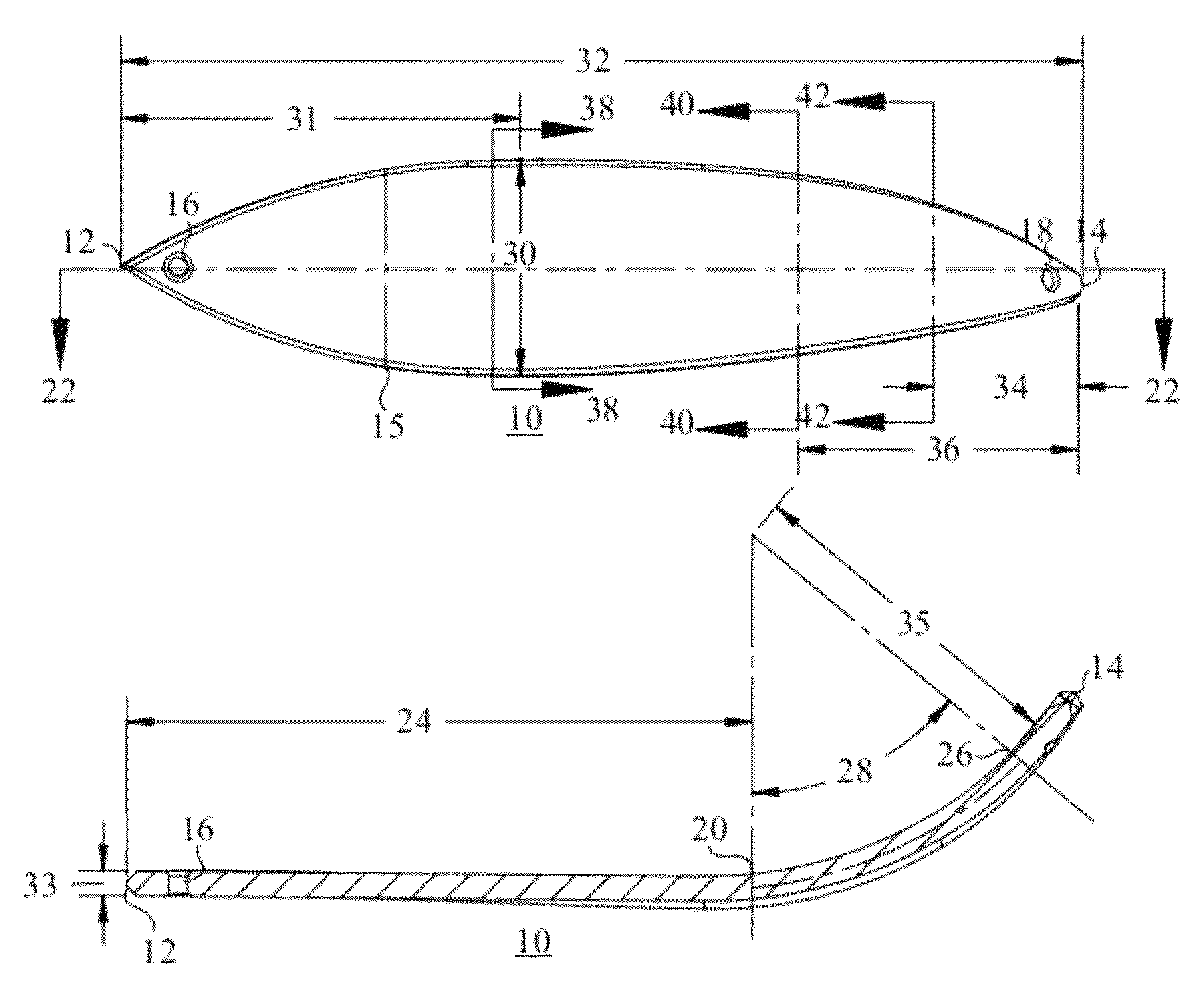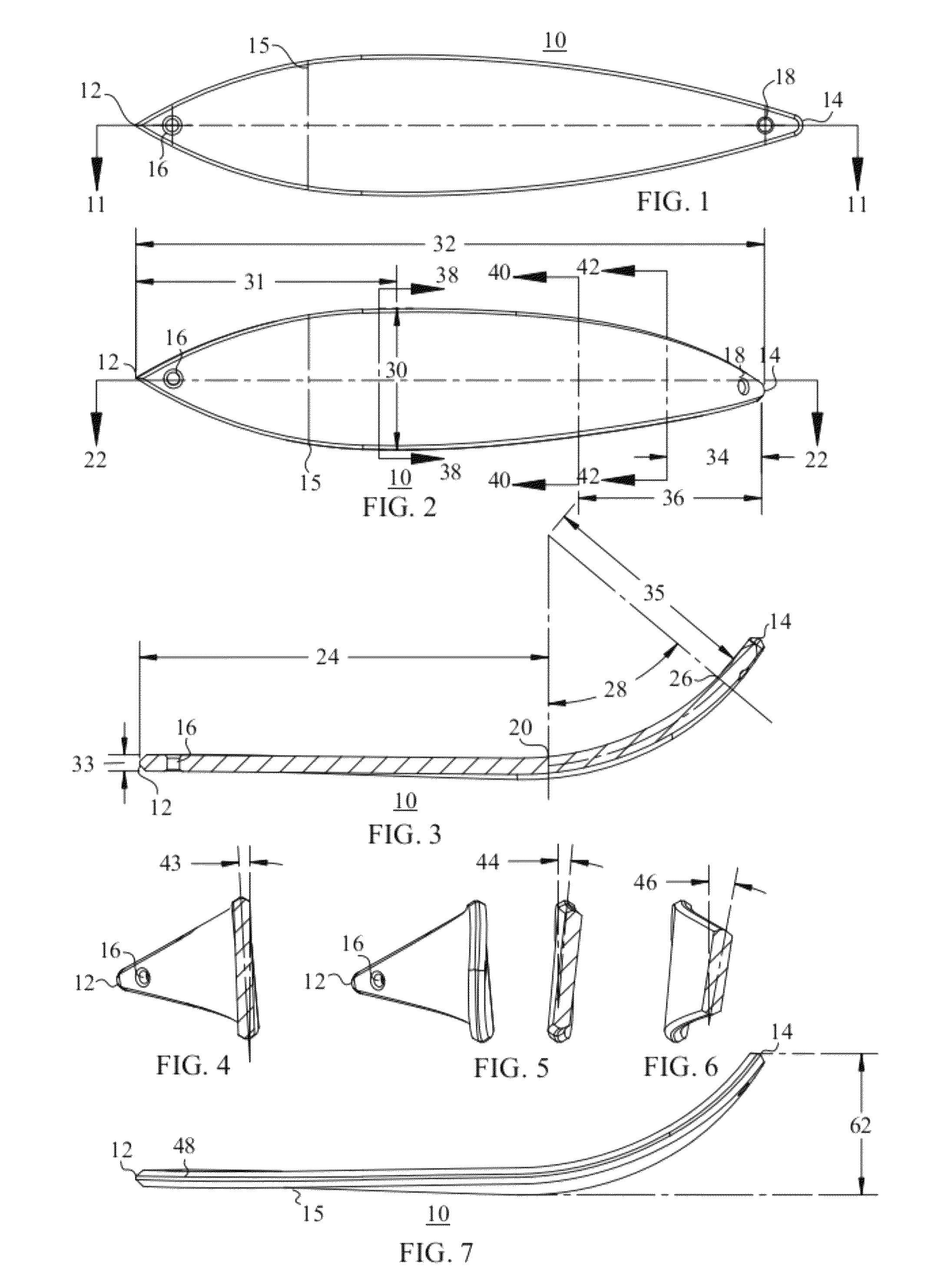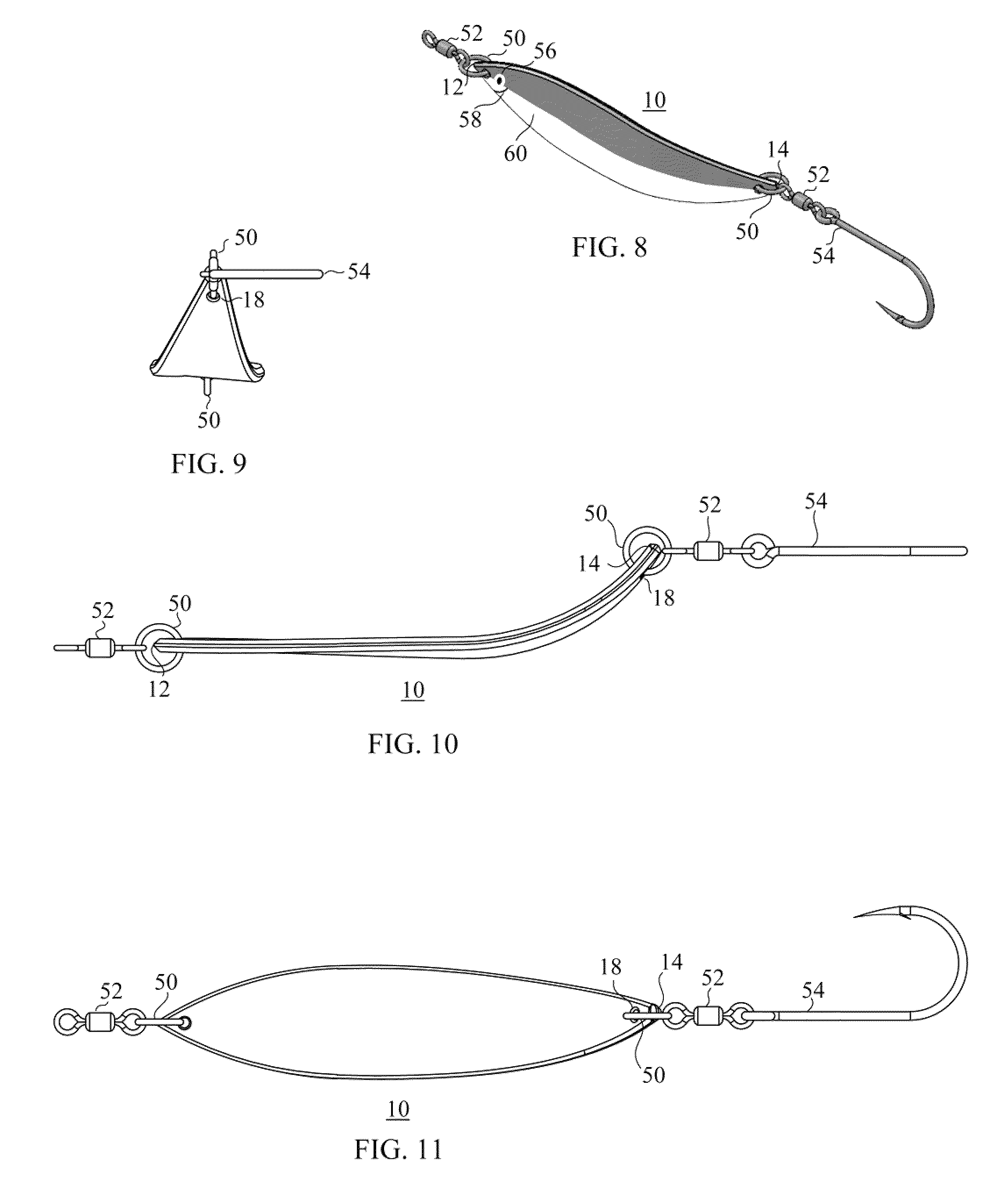Fishing lure
a technology for fishing lures and lures, applied in the field of fishing lures, can solve the problems of not all lures are equally well-designed to attract, capture and/or hold fish, and the market for fishing equipment seems inexhaustible, and achieve the effect of moderate speed and predictability of rolls
- Summary
- Abstract
- Description
- Claims
- Application Information
AI Technical Summary
Benefits of technology
Problems solved by technology
Method used
Image
Examples
first embodiment
[0047]FIGS. 1 to 11 illustrate a first embodiment that works best when pulled into moving water. The threshold value of this embodiment is the water flow speed equivalent to ocean water at mid tide or fresh water with a class 1+ current. The lure will only roll in a reverse direction occasionally when pulled through calm water or cross current. See FIGS. 12 to 17 for embodiments with a threshold value of zero, meaning they exhibit a reverse roll action no matter how little current opposes the forward motion of the lure.
[0048]In the spring, most bait fish are juvenile and small, so game fish are attracted to a small lure, but usually these lures and the hooks they accommodate are not strong enough to hold a large game fish. FIGS. 15 to 17 illustrate an embodiment that works best as a smaller lure (1 to 3.5 inches or 2.5 to 8.9 centimeters (“cm”)) and is designed to be in balance with a larger hook than the other embodiments.
[0049]FIG. 1 is a plan view of a flat blank used to make a f...
third embodiment
[0062]FIGS. 15-17 illustrate this invention, preferably a smaller lure with more bend to balance one size heavier hook 54. If all else is equal, increasing the bend will tend to make a lure roll in only one direction, but the heavier hook 54 and other changes counteract this inclination. This embodiment is designed to simulate juvenile bait fish to attract large game fish in the spring, but without the larger hook, the lure could not hold a large fish. The length to width ratio also tends to be slightly greater than in the other illustrated embodiments so the lure is a little more streamlined. The latitudinal axis 15, where the twist begins, is at a distance from the nose 12 that is 40 to 46% of the total length of the body and the angle of rotation 46 of the twist is 11 to 14° at a cross-section 42-42 that is at a distance from the tail 14 that is in the range of 7 to 8% of the total length of the body 10. The bend 20-14 subtends an angle 28 of 55 to 65° and begins at a distance 24...
PUM
 Login to View More
Login to View More Abstract
Description
Claims
Application Information
 Login to View More
Login to View More - R&D
- Intellectual Property
- Life Sciences
- Materials
- Tech Scout
- Unparalleled Data Quality
- Higher Quality Content
- 60% Fewer Hallucinations
Browse by: Latest US Patents, China's latest patents, Technical Efficacy Thesaurus, Application Domain, Technology Topic, Popular Technical Reports.
© 2025 PatSnap. All rights reserved.Legal|Privacy policy|Modern Slavery Act Transparency Statement|Sitemap|About US| Contact US: help@patsnap.com



